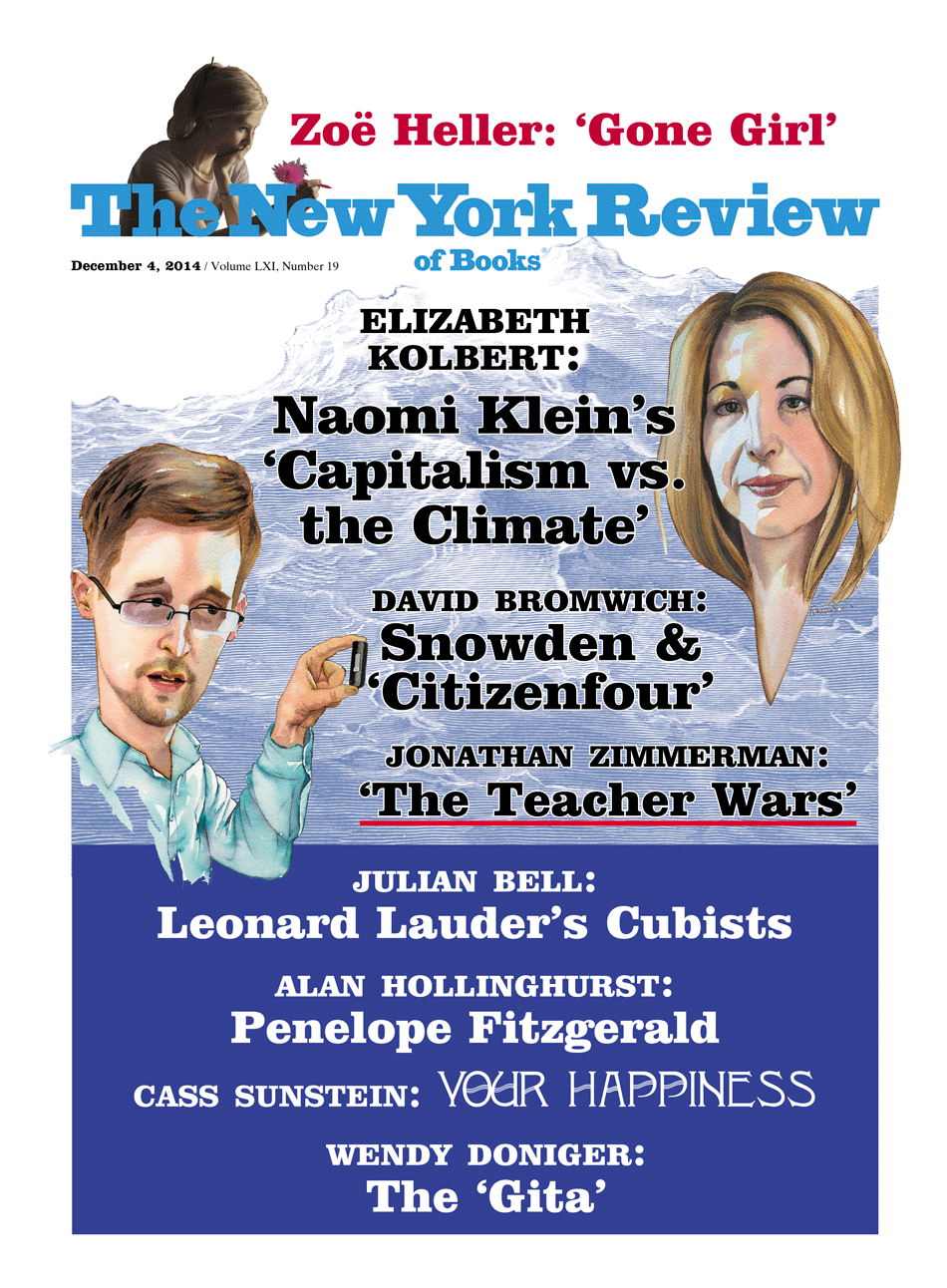In response to:
‘Broken Windows’ and the New York Police from the November 6, 2014 issue
To the Editors:
I take issue with two omissions in Michael Greenberg’s’s interesting and informative article about NYC policing [NYR, November 6]. One is his omission of the public schools from this statement: “The extent of the isolation of these neighborhoods is startling. The police and a handful of emissaries from health and social services are virtually the only outsiders who regularly set foot in them.” Having spent thirty years in the New York City public schools, I can say that most frequently the only public agency open five days a week, twelve months of the year, is the public school, or schools. There families find out what is available in community and parks programs, library programs, health, safety, fire prevention, etc. There children eat two meals a day, have clothing collected for them. There the staff invariably spends personal money on children, buying them mittens, collecting money for “raffles” to send home Thanksgiving turkeys.
I also wonder at his failure to mention Levitt and Donohue’s theory about legalized abortion and its connection to reduction in serious crime. Greenberg notes that a poor economy and joblessness in recent years should have meant an increase in crime: “How are we to explain that with all these circumstances, there has not been even an uptick in violent crime? No single theory comes close to telling the whole story.” Perhaps not, but Greenberg has not examined a single theory other than policing methods, and surely our police force in recent decades has carried out no program to cause such a reduction in serious crime.
Mary Ellen Levin
New York City
Michael Greenberg replies:
I thank Mary Ellen Levin for pointing out the beneficial presence of public school teachers and other Board of Education workers in New York’s poorest neighborhoods. We may add to this the presence of New York’s public libraries, which have branches in almost every one of the city’s impoverished districts, including the South Bronx, Harlem, Brownsville, Crown Heights, Bedford-Stuyvesant, Coney Island, and East New York. These libraries provide a refuge, as well as a vital source of information and opportunity, for many young people.
Ms. Levin wonders why I did not mention John Donohue and Steven Levitt’s theory that the legalization of abortion, in 1973, is the primary reason for the sharp, and continuing, drop in violent crime that began in the late 1990s. This is perhaps the most elaborately imaginative of the many unquantifiable, and unprovable, theories that have attempted to explain the phenomenon over the past two decades. Levitt and Donohue argue that as a result of legal abortion, fewer unwanted children have been born; since unwanted children are more likely than others to turn to violent crime, the number of felonies has fallen. The effect of the absence of these unborn criminals began to be felt in the late 1990s, they maintain, when the first batch would have reached late adolescence, the age when boys are most at risk of engaging in criminal behavior.
We are dealing here with the projected actions of people who will never be born, and it is no surprise that at times the authors’ statistical analysis seems to have more in common with Gogol than with empirical scientific research. In any event, Christopher Foote and Christopher Goetz, two economists at the Federal Reserve Bank in Boston, have discovered errors in Donohue and Levitt’s method of computing that throw their already speculative findings into serious doubt.
From criminologists, journalists, and social scientists have come a plethora of other, equally unquantifiable, explanations for the drop in violent crime: the crash in the price of crack (because it made the business unattractive to the most violent dealers); gentrification (because it adds economic value to distressed neighborhoods); affirmative action; the prevalence of surveillance cameras that make it harder to get away with violent offenses in public; the so-called “little brother syndrome,” which suggests fatigue and disenchantment with the criminal life among a generation that witnessed the ruin that gunplay, incarceration, and drugs heaped on their elders. The recently completed Project on Human Development in Chicago Neighborhoods found that when improvements are initiated by the inhabitants of high-crime neighborhoods (rather than by government agencies or other outside forces), crime in those neighborhoods tends to decrease. The transformation of vacant lots into community gardens is a prime example. All or some of these suppositions may (or may not) have contributed to the reduction in violent crime. Whether we like it or not, it defies logic to discount completely the broken windows policy of policing as a factor.
The fact is, the reasons for the ebb and flow of crime remain a mystery (though chronic unemployment has proven to be a reliable predictor for increases in crime). The study that might solve this mystery—and provide us with an ultimate cause—has yet to be undertaken or even fully conceived.


